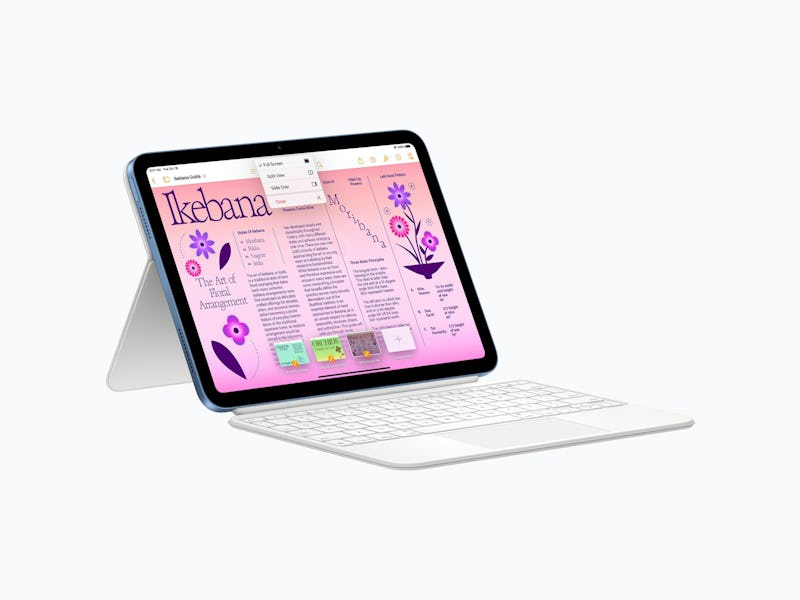Why the 10th-gen iPad doesn't have a laminated display
It has nothing to do with Apple being "cheap".

When Apple announced the 10th-generation iPad last month, my first thought was: yes, the FaceTime camera is now horizontal and not vertical. My second thought was: why is the display not laminated?
Every other iPad from the iPad Air 4 to the iPad mini 6 to the M2 iPad Pros has a laminated display, so what gives? Why is Apple saddling its no-adjective iPad with a display where there is a noticeable air gap between the glass surface and LCD touchscreen? YouTuber Dave "Dave2D" Lee actually provides a good explanation for why this is the case. And no, it has nothing to do with Apple being "cheap".
Made for bulk repairs
In his review of the M2 IPad Pros and the 10th-generation iPad, Lee says the latter tablet's non-laminated display "has to be that way."
"Laminated displays do look better because the display is fused right up to the glass, there's no air gap so it just looks like a cleaner and crisper image," Lee says. "But if you crack one of those displays you have to replace everything, the top glass layer, the display underneath, sometimes the driver. That whole thing is very expensive to replace."
Okay, so repairability is a top reason why Apple put a non-laminated display in the 10th-generation iPad, but there’s also another reason: bulk deployment in settings like schools or companies. The low-end iPads, not the tricked out iPad Pros, are often purchased in hundreds or thousands of units and deployed to students or employees where they're likely to be handled more roughly. Lee says the cost for bulk repairs wouldn't justify a bonded laminated display.
The cost of repairing cracked laminated screens would add up in bulk.
"These are products that can be used in educational applications or enterprise applications where you have hundreds or thousands of these things and if you have to repair them regularly and frequently you do not want a laminated display," Lee says. "You want a non-laminated display like you see on the 10th-generation iPad, and if it cracks you just replace that top glass. It's like $15 versus $100 when you do the whole unit.”
Lee’s estimated repair cost shouldn’t be taken for an exact price quote, but you get what he’s saying. In bulk, replacing broken parts would cost less than an entire laminated display where you have to replace everything. If you visit Apple’s iPad Repair & Service website, you can see the estimated out-of-pocket repair cost (that’s without AppleCare+) for non-battery damage is indeed less for the 10th-generation iPad than all of the iPads that have laminated displays:
- 10th-gen iPad: $319
- iPad mini 6: $349
- iPad Air 5: $419
- 12.9-inch M2 iPad Pro: $749
Lee's final thought on the complaints is that entry-level iPads have always come with a non-laminated display because of their intended users. Yours truly couldn’t agree more with his assessment. You can choose to believe that Apple is intentionally shipping a new iPad with a worse display or there’s actually a rationale behind it.
Inverse may receive a portion of sales if you purchase a product through a link in this article.